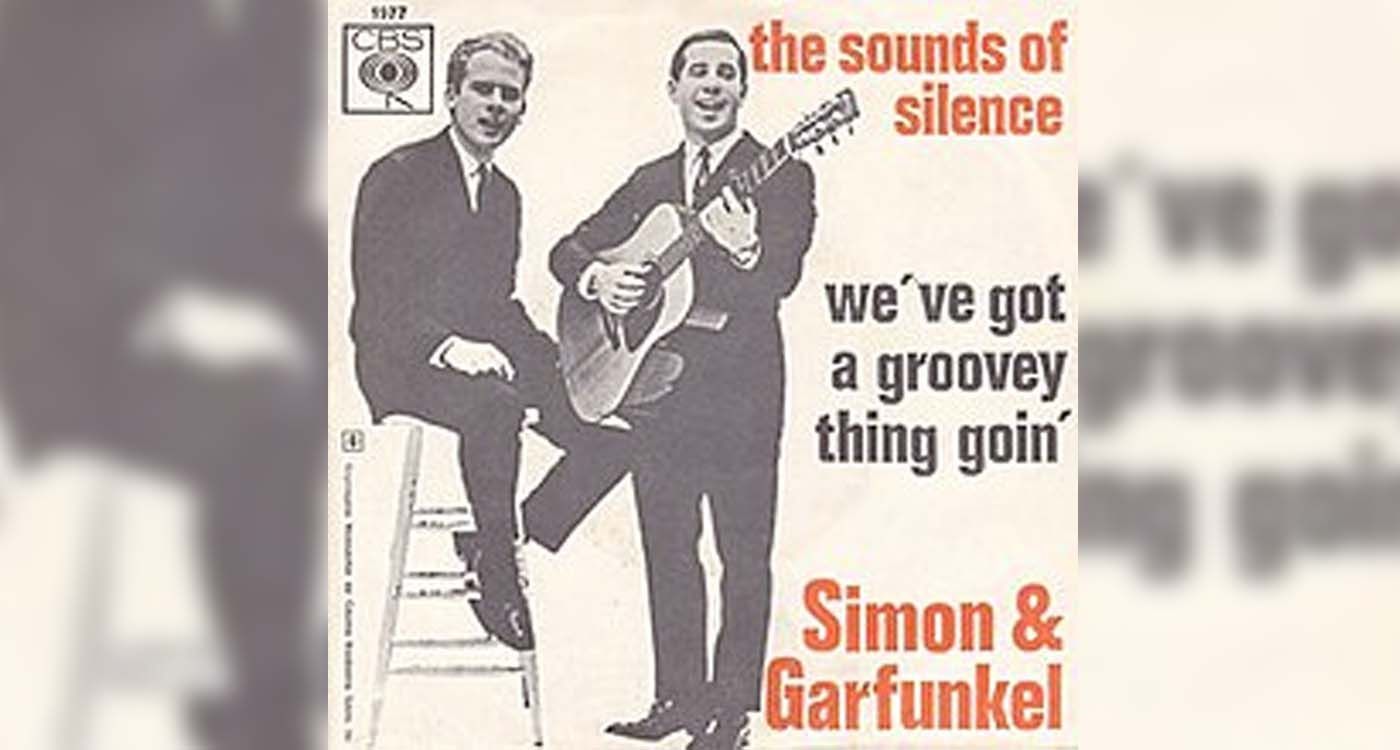
Behind “The Sound of Silence” lies more than just a musical masterpiece composed by Paul Simon—it is a poignant story of friendship and selflessness, uniting Art Garfunkel and Sandy Greenberg. This is how the unbreakable bond between these two friends shaped their destinies and, behind the scenes, helped propel a song to legendary status.
In the early 1960s, Paul Simon, then an unknown young musician, composed his songs in an offbeat place—his parents’ bathroom. Captivated by the acoustics of the small space, he refined the chords and lyrics of what would become one of the most iconic songs of the 20th century.
At that time, Simon and his childhood friend Art Garfunkel formed a promising folk duo, inspired by the musical traditions of Bob Dylan and the Everly Brothers. In March 1964, they recorded an acoustic version of “The Sound of Silence”, a melancholic ballad with introspective lyrics about isolation and misunderstanding.
Released in October 1964 on their debut album, Wednesday Morning, 3 A.M., the song went unnoticed. The album was a commercial failure, and the duo seemed doomed to oblivion. But this was just the beginning—an extraordinary friendship was about to change the fate of this song.
A Pact Sealed in Adversity
In 1958, on the campus of Columbia University in New York, Art Garfunkel met someone who would change his life—Sanford “Sandy” Greenberg, a brilliant student from Buffalo. Passionate about music and literature, the two young men quickly formed a deep friendship, vowing to always be there for each other, no matter what.
This promise was put to the test when Sandy, just months after arriving at Columbia, began losing his vision due to a sudden and severe case of glaucoma. Doctors were certain—he would go completely blind. Devastated, he decided to drop out of school and return home to Buffalo, convinced that all his dreams had collapsed.
But Art Garfunkel refused to let his friend give up. He traveled to Buffalo, persuaded Sandy to return to Columbia, and made a solemn vow: he would be his eyes and never abandon him. True to his word, Garfunkel became Sandy’s shadow—guiding him, reading his lessons, and accompanying him every step of the way. As a testament to their unwavering friendship, Garfunkel even gave himself the nickname Darkness.
Garfunkel’s support went beyond mere moral encouragement. One day, he decided to test his friend’s resilience by secretly leaving him alone in the New York subway. From a distance, he watched Sandy struggle, stumble, fall, and ultimately find his way. A harsh but transformative moment—one that reignited Sandy’s confidence, empowering him to face life despite his blindness.
Thanks to this life-changing moment, Sandy Greenberg refused to be defeated. He graduated from Columbia in 1962, married his childhood sweetheart, Sue, and earned a prestigious Fulbright scholarship to study at Oxford. He later continued his studies at Harvard and became a celebrated philanthropist. His success story was largely made possible by Art Garfunkel's unwavering support.
A Decisive Phone Call
A few years later, the roles reversed. While Sandy was studying at Oxford, it was Garfunkel who found himself in need of help.
In October 1964, Wednesday Morning, 3 A.M. was a commercial failure. Discouraged, Paul Simon left for England to try his luck, while Garfunkel stayed in New York. Their musical dream seemed to be fading.
It was at this point that Art Garfunkel called his old friend from university. When Sandy picked up the phone, he heard Garfunkel’s hesitant yet determined voice. After catching up, Garfunkel finally revealed the real reason for his call—he and Paul Simon needed money to fund a new musical project.
Without hesitation, Sandy asked how much they needed. The answer: 400 dollars—a significant amount for two penniless musicians.
Without a second thought, Sandy and his wife Sue made a drastic decision. They emptied their bank account and sent all their savings to Art Garfunkel. To them, this was not just a loan but an act of faith—a way to repay the support Garfunkel had given Sandy in his darkest hours.
The sacrifice didn’t immediately pay off. The album funded by their money failed to achieve the anticipated success, and Simon & Garfunkel seemed destined for oblivion. However, more than a year later, an unexpected decision would change their fate.
In 1965, producer Tom Wilson, convinced that the song had untapped potential, re-recorded it with electric orchestration, all without informing the duo. Released as a single in September 1965, this revamped version quickly took over the airwaves, becoming an instant radio hit.
On January 1, 1966—over two years after Garfunkel’s call to Greenberg—“The Sound of Silence” reached the number one spot on the Billboard Hot 100. Within weeks, Simon & Garfunkel became international stars, catapulted to the pinnacle of the music industry.
Somewhere between Paul Simon’s tiny bathroom and the misty paths of Columbia University, between the darkness of blindness and the light of unwavering friendship, one of the most beautiful stories in music history was written—a page where every word, every note, echoes a promise—the kind of promise made to a friend, one night, never to let them fall.





Comments